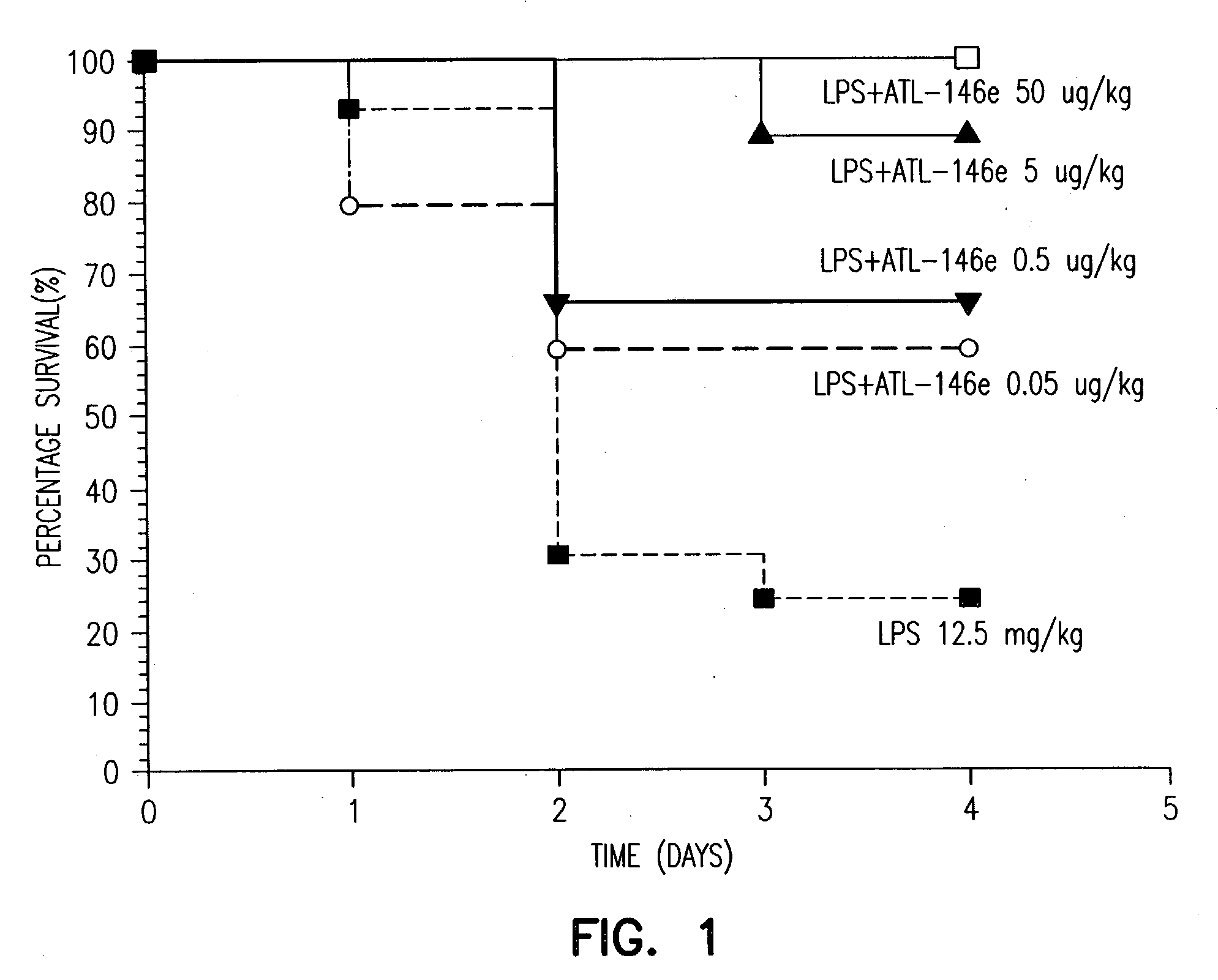Adjunctive treatment of biological diseases
- Summary
- Abstract
- Description
- Claims
- Application Information
AI Technical Summary
Benefits of technology
Problems solved by technology
Method used
Image
Examples
preparation 9
[4-(tert-Butyl-dimethyl-silanyloxymethyl)-cyclohexyl]-methanol (83)
[0274]
[0275]To a 100 mL-flask containing 79 (4.0 g, 27.8 mmol) in DMF (40 mL) was added TBDMSCl (3.56 g, 23.6 mmol) and imidazole (3.79 g, 55.6 mmol). The reaction was allowed to stir at 25° C. for 16 hours after which time saturated aqueous LiBr (50 mL) was added and the reaction extracted with ether (2×50 mL). The ether layers were pooled and extracted again with LiBr (2×35 mL). The ether layer became clear. The ether layer was then concentrated in vacuo and the product purified by flash chromatography, on a silica gel column, eluting with 1:2 ether / petroleum ether to yield 83 (3.80 g, 62%) as a homogenous oil. 1H NMR (CDCl3) δ 3.46 (d, J=6.2 Hz, 2H), 3.39 (d, J=6.2 Hz, 2H), 1.95-1.72 (m, 4H), 1.65 (m, 1H), 1.40 (m, 1H), 1.03-0.89 (m, 4H), 0.88 (s, 9H), 0.04 (s, 6H); 13C NMR (CDCl3) δ69.2, 69.1, 41.2, 41.1, 29.5, 26.5, 18.9, −4.8; APCI m / z (rel intensity) 259 (MH+, 100).
Preparation 10: Toluene-4-sulfonic acid 4-(te...
preparation 33
[0322]The following intermediate compounds are prepared using the general method 1 described herein and the appropriate starting materials.
(R)-1-Ethynyl-3-tert-butyl-cyclohexanol (JR3255A), (S)-1-Ethynyl-3-tert-butyl-cyclohexanol (JR3255B)
[0323]
Toluene-4-sulfonic acid 4-prop-2-ynyl-cyclohexylmethyl ester (JR3077)
[0324]
1-Ethyl-4-prop-2-ynyl-cyclohexane (JR3083)
[0325]
1-(4-Prop-2-ynyl-cyclohexyl)-ethanone (JR3115)
[0326]
1,1-Dicyclohexyl-prop-2-yn-1-ol (JR3127)
[0327]
1-Cyclohexyl-prop-2-yn-1-ol (JR3129)
[0328]
4-Ethyl-1-ethynyl-cyclohexanol (JR3143)
[0329]
1-Ethynyl-3-methyl-cyclohexanol
[0330]
1-Ethynyl-3,3,5,5-tetramethyl-cyclohexanol (JR3151)
[0331]
1-Ethynyl-4-phenyl-cyclohexanol (JR3153)
[0332]
1-Ethynyl-2-methyl-cyclohexanol (JR3167B)
[0333]
4-tert-Butyl-1-ethynyl-cyclohexanol (JR3191)
[0334]
1-Ethynyl-3,3-dimethyl-cyclohexanol (JR3193)
[0335]
Piperidine-1,4-dicarboxylic acid 1-tert-butyl ester 4-methyl ester (JR3195)
[0336]
4-Hydroxymethyl-piperidine-1-carboxylic acid tert-butyl ester (JR3199)
[0337]...
example 1
4-{3-[6-Amino-9-(5-ethylcarbamoyl-3,4-dihydroxytetrahydrofuran-2-yl)-9H-purin-2-yl]-prop-2-ynyl}-cyclohexanecarboxylic acid (109)
[0344]
[0345]The reaction of 110 with five equivalents of LiOH in THF / water for 6 hours gave 109 (7 mg, 72%) as a white solid which was crystallized from MeOH / H2O (0.1% TFA) after purification by reverse phase HPLC. 1H NMR (DMSO-d6) δ 8.70 (s, 1H), 8.41 (s, 1H), 7.62 (s, 2H), 5.89 (d, J=7.25 Hz, 1H), 4.53 (m, 1H), 4.27 (s, 1H), 4.08 (d, J=3.6 Hz, 1H), 2.29 (d, J=6.4 Hz, 2H), 2.15-1.99 (m, 1H), 1.92-1.76 (m, 4H), 1.52-1.38 (m, 1H), 1.38-1.19 (m, 2H), 1.02 (t, J=6.3 Hz 3H); 13C NMR (DMSO-d6) 176.7, 169.2, 155.6, 148.9, 145.2, 141.6, 119.0, 87.7, 85.0, 84.6, 81.6, 73.1, 71.9, 43.2, 35.9, 33.3, 31.2, 28.3, 25.6, 15.0. HRMS (FAB) m / z 474.2196 [(M+H)+ cacld for C22H29N6O6 474.2182].
PUM
| Property | Measurement | Unit |
|---|---|---|
| Fraction | aaaaa | aaaaa |
Abstract
Description
Claims
Application Information
 Login to View More
Login to View More - R&D
- Intellectual Property
- Life Sciences
- Materials
- Tech Scout
- Unparalleled Data Quality
- Higher Quality Content
- 60% Fewer Hallucinations
Browse by: Latest US Patents, China's latest patents, Technical Efficacy Thesaurus, Application Domain, Technology Topic, Popular Technical Reports.
© 2025 PatSnap. All rights reserved.Legal|Privacy policy|Modern Slavery Act Transparency Statement|Sitemap|About US| Contact US: help@patsnap.com



